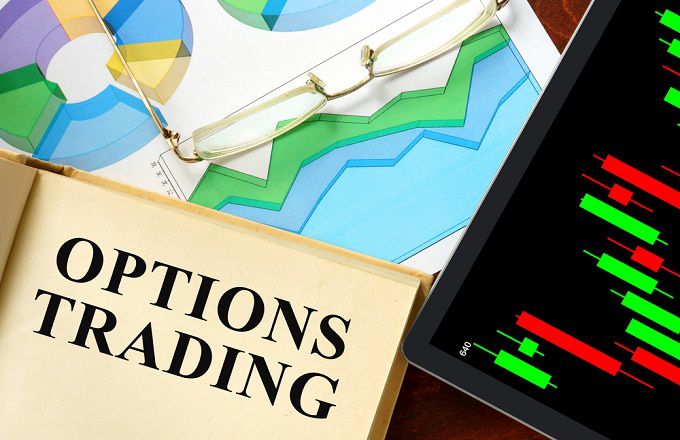Trading and analysis of financial products such as stocks, options, futures and currencies are facilitated by trading software. Trading software packages for a wide range of markets (such as stocks versus forex) are available for traders of all skill levels.
Key Information Securities analysis and electronic trading are enabled by trading software. In addition to learning how to trade or invest, self-traders must use and master their trading software. Order entry, technical and fundamental analysis, automated trading and paper trading are common functions of trading software.
Understanding Trading Software:
Brokers often offer their clients trading software to manage their accounts and enter trades. Traders can also purchase third-party trading software that complements or enhances the brokerage software.
Due to the long-term decline in commission costs, more brokers and financial backers have moved to do their own part of the exchange and testing using independent exchange accounts anyway. As a result, there is now more demand for software that includes analytics and information resources as well as trading capabilities.
Users of the trading software may be provided with price information for assets, special order types, underlying data, charts, technical analysis indicators, statistics, chat rooms and other proprietary tools and features used by brokers and software developers to attract traders to their services.
The business software industry is also supported by APIs or application programming interfaces. APIs think of connecting two other bits of exchange programming that work as one. This allows users to take advantage of multiple pieces of software.
Types of exchange programming
The most typical features include:
Trade Execution: Most trading software can search real-time quotes and view the Level 2 order book, as well as enter trades, including market orders, limit orders, and other advanced order types.
Analytical Techniques:
Most trading programs include intuitive charting capabilities, including chart designs such as trend lines and shapes, as well as specialized markers such as moving averages or strength oscillators.
Fundamental Analysis:
Financial statements, analyst ratings, and other proprietary tools created for investors to assist with due diligence are all available through some trading software.
Programmatic Trading:
Traders can create automated trading systems without manually clicking a button using advanced trading software. Back testing is another feature these software solutions can offer traders to see how their automated trading systems would have performed in the past.
Paper Trading:
Paper trading is a feature of some trading software that allows for risk-free trades without real money. Before investing real money, traders can practice their skills to see how they would perform. This feature is particularly prevalent among brokers in the forex market.
Choice of exchange programming:
Before embarking on exchange programs, marketers and funders should carefully consider what they need. An investor who only wants to trade may choose a different trading software than active traders who rely on automated trading systems.
There may be different fee structures, performance characteristics and other factors that affect the profitability of software applications.
Before you commit to buying software or opening an account with a broker, most software developers and brokers allow potential customers to test it. Take advantage of this and evaluate a number of software programs. See the features and tools you use most. Then consider the pros and cons of the broker, as well as their possible commissions.
Assuming you like a particular merchant, for example, as a result of their low-cost structure, however much you could do without their product, you may in any case be able to find third-party programming that you can use via a programming interface or freely.
For example, you can use a third-party charting service that you like in conjunction with your broker’s trading capabilities if you don’t like your broker’s charting capabilities.
Examples of Third-Party Trading Software:
Most brokers offer third-party trading software in addition to their own. For example, in the forex business, many representatives have their own product, but many also give MetaTrader4 or potentially MetaTrader5, which is the generally used phase of the outsider exchange.
In the financial exchange, most specialists give their own product. Some of the major brokers and their software are shown here.
- Active Trader Pro is provided by Fidelity.
- TWS and the low fee per share structure are provided by Interactive Brokers.
- Charles Schwab offers $4.95 stock trades and Street-smart Edge.
- Both day traders and active traders use Trade Station, which is offered by Trade Station.
- The thinkorswim trading platform and $6.95 stock trades are offered by TD Ameritrade.
- Trading platforms and software developed by third parties are also widely available.
- The Ninja Trader platform can be connected to a number of brokers and offers trading, analysis and charting capabilities.
Trading View and Stock Charts offer fundamental and technical charting tools. These tools can increase the staking capacities given by changing the stages.
A digital wallet of your all web3 needs:
SPONSORED All-In-One Digital Wallet for Web3 Accessing a wide variety of DeFi platforms. From cryptocurrencies to NFTs and beyond, is easier than you might expect. When you trade and store assets, you have access to world-class security through OKX. The leading financial services provider for digital assets. You can also connect existing wallets. And win up to $10,000 if you deposit more than $50 via cryptocurrency purchase or top-up within 30 days of signing up. Register now to learn more.
